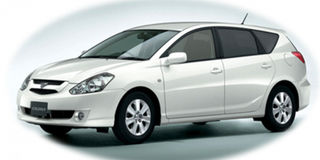Prime
What’s the difference between the second and third generation Toyota Caldina?

Hi Paul, my first car was a 1995 Toyota Caldina inherited from my father. I want to upgrade to a more comfortable and trendier Caldina. My choice is between the 2nd generation (1992-2002) and 3rd generation (2002-2007) Toyota Caldina. What are the strong points and differences of each? Kalama R
Hello Kalama, the Toyota Caldina is an estate wagon with All wheel Drive -AWD and 4WD capability which makes them a practical choice because of their multipurpose value as people and cargo movers. The 1st generation Caldina (1998-2002) and 2nd generation Caldina (1998-2002) were built on Corona and Premio platforms which gave them a saloon car feel while offering the spaciousness and practical benefits of an estate wagon. The 3rd generation Caldina (2002-2007) is a sportier trendier estate wagon with more efficient and powerful performance credentials than its more utilitarian ‘older siblings’.
DESIGN AND PRACTICALITY. The 1st generation Caldina was more utilitarian with soft curves, longer body, simpler but less efficient engines and practical suspension with the option of rear leaf springs to carry heavy cargo. The 2nd generation Caldina came with softer curves, improved front bumper styling with angular head lights.
It also provides an updated interior furniture and accessories with more comfortable independent suspension. The 3rd generation Caldina has a bolder more aggressive sharper look. It spots a chunkier one line front grille sitting between tear drop edged but wider headlights atop the sharply chiseled bumper air dams.
The turbo charged models come with a sporty bonnet mounted snorkel for the intercooler. The interior is sportier and more stylish with Recario sports seats. This is arguably Toyota’s sportiest estate wagon.
PERFORMANCE: While 2nd generation Caldina dropped the leaf sprung rear suspension it used Premio platforms and carried on the 1st generation simple but reliable 115 horsepower 7AFE 1.8 L and the 126 horse power 3SFE 2.0 L petrol engines. The 2nd generation Caldina shared the 260 horsepower 3SGTE turbo charged engine with the 3rd generation Caldina.
The 3rd generation Caldina introduced newer lightweight more powerful and fuel efficient engines. These engines were built with a combination of ceramic, aluminum and cast iron metals and more efficient fuel injection and variable valve timing for better fuel economy.
The 120 horse power 1ZZFE 1.8L Multi point fuel injection with VVTi and the 147 horse power 1AZFSE 2.0L Direct 4 (D4) petrol engines provide excellent performance and fuel efficiency.
However they are more sensitive to fuel system and lubrication system cleanliness. Use of efficiency enhancing system cleaning fuels and engine oils is very crucial for the long life of these newer Caldina engines. Repair of engines with alloy metals is not easy especially after overheating. Turbo charging was also offered as an option with multiple upgrades of the turbo chargers.
SAFETY & HANDLING: Whereas the 1st and 2nd generation Caldina cars were considered more robust the 2nd and 3rd generation are safer to drive. 2nd generation Calkins introduced supplementary restraint air bags and Traction control for vehicle stability with anti lock brakes (ABS) to improve dynamic safety and handling.
The 3rd generation Caldina took the safety and performance notch higher by introducing sport ABS. The shorter, wider and lower more aerodynamic body design gave it a sportier feel with better stability, road grip and handling during fast sprints around sharp bends.



